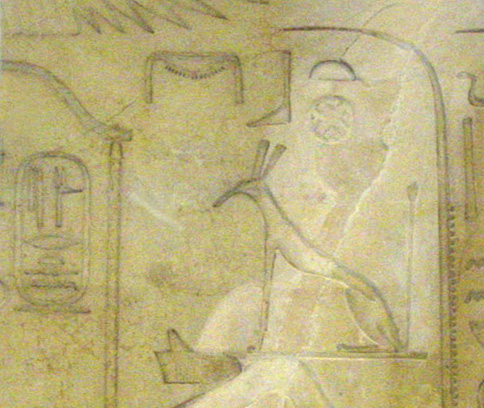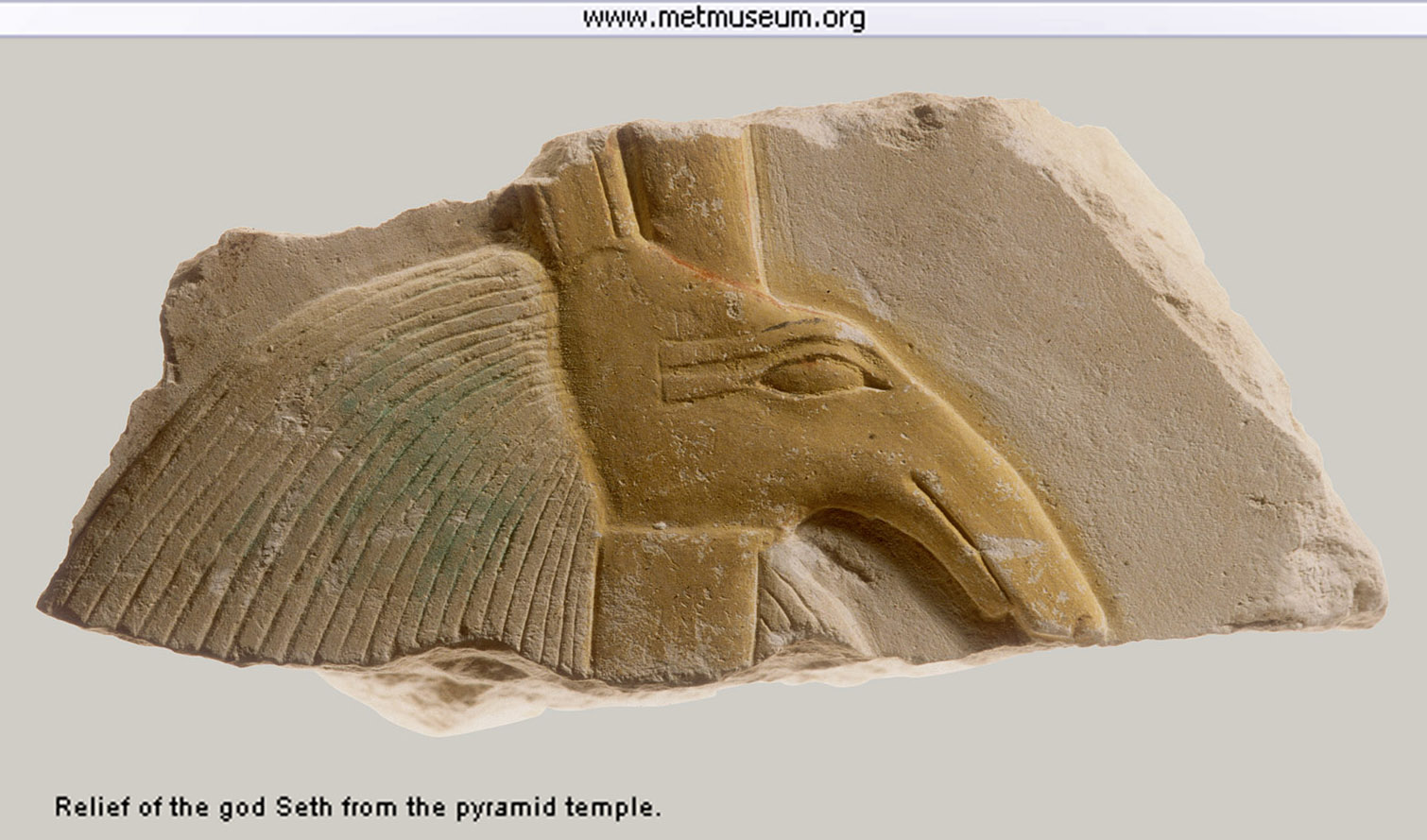
"Relief of the god Seth from the pyramid temple"
The 12th Dynasty pyramid complex of Senwosret III (r. 1878–1840 B.C.)
Metropolitan Museum of Art, NYC
|
Dieter Arnold of the Met's Department of Egyptian Art
says: "King Senwosret III (r. ca. 1878–1840 B.C.) was one of the most powerful and important rulers of ancient Egypt. Key developments in religion, political administration, and the arts took place during his reign." We can compare this Middle Kingdom fragment to how Set was depicted in several 18th Dynasty relief fragments. |
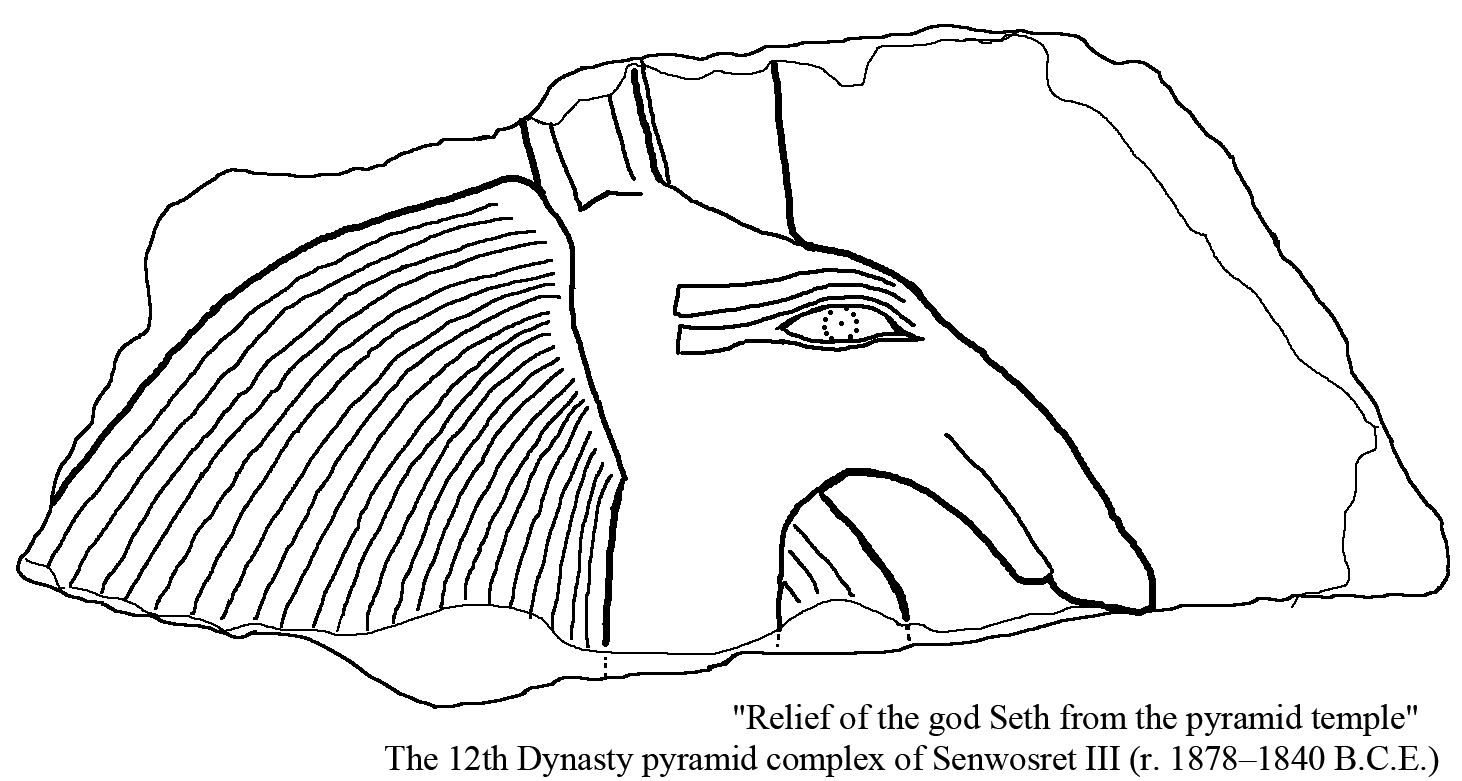
| Senwosret III has another Set-related piece, now at the Cairo Museum: |
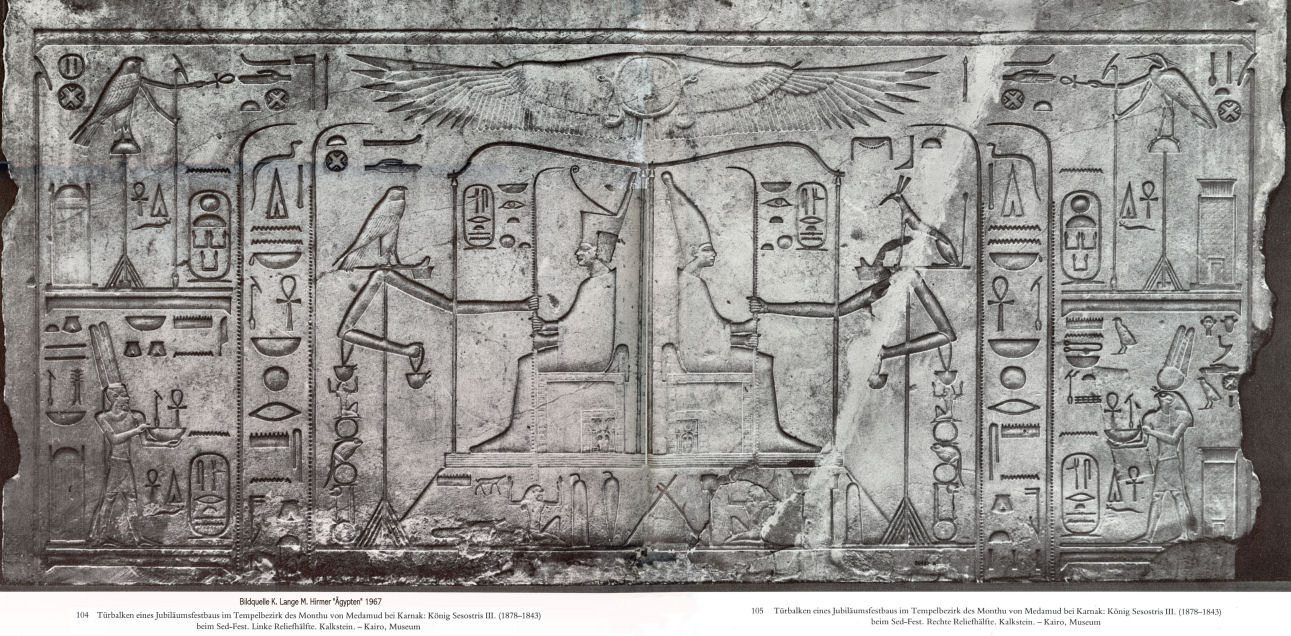
Source from"Kairoinfo4u", which is viewable larger. It appears to have been found in a German text.
Tutincommon photographed part of this piece , I've saved the large size here, here is a cropped detail:
| This lintel is commemorating Senusret III's (aka Senwosret III's) Sed-festival. Tutincommon reveals he took his photo in the Cairo museum. |

| (Basically, the Heb Sed was a festival to show the king's strength, held every thirty years to show he still had the right 'stuff' to rule). With a little search, I found several references to this piece in Wilkingson's _Reading Egyptian Art_. The lintel originally came from Naq el-Madamud. A look in the back of the book gives the Cairo Egyptian Museum accession number: JE 6189. The Art Dictionary defines "lintel - In architecture, a horizontal beam of any material spanning an opening, usually between two walls or posts." Another lintel of Sesostris III (aka Senusret III, Senwosret III, Senusert III) is at the Louvre. |
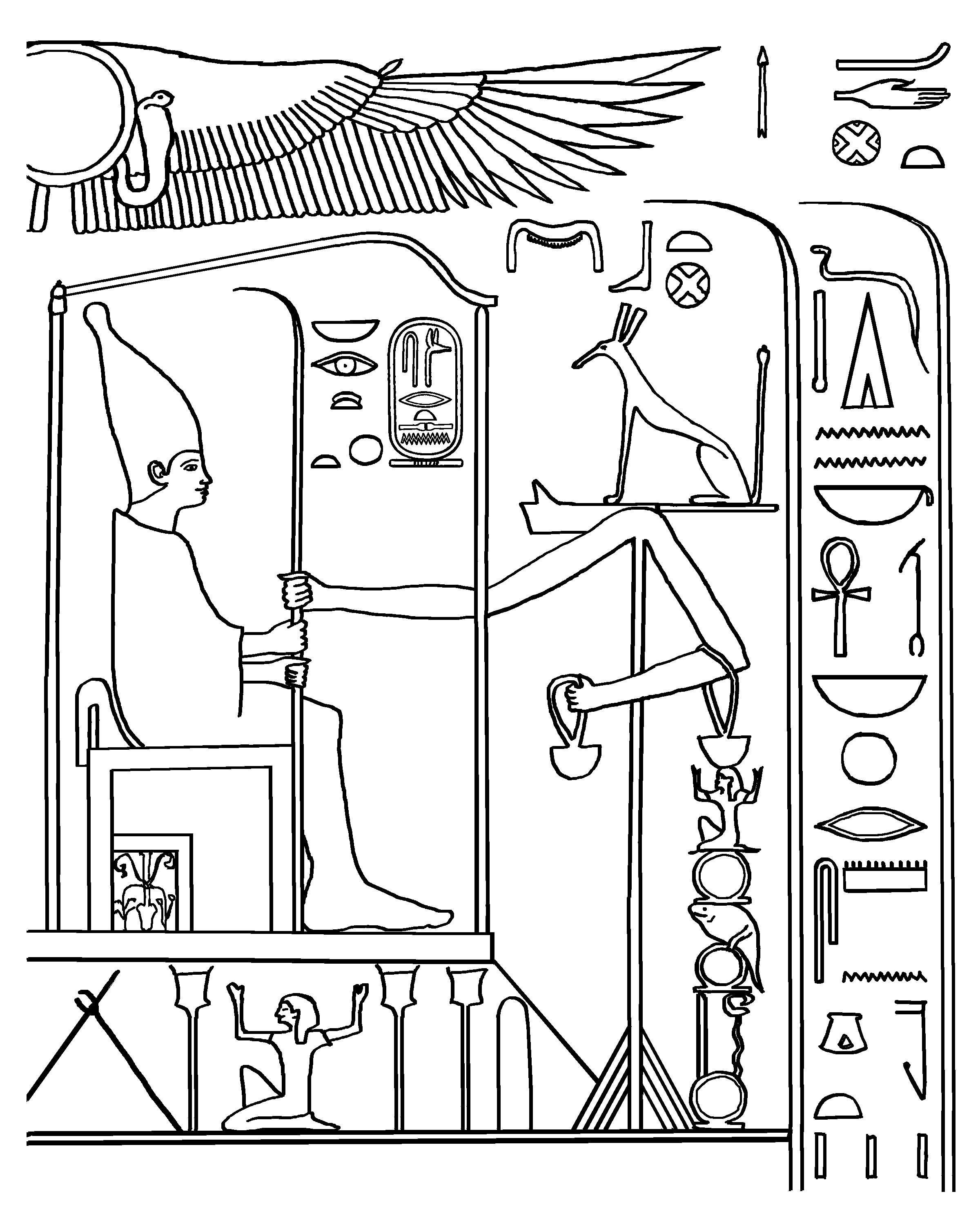
One half of this lintel in which the standards of Set and Horus present Senwosret III, aka "Sesostris III" with palm branches
Note, too, the 'gold town' "Nubt" hieroglyphs, since he is associated with Nubt, aka Naqada
|
The palm hieroglyph repeats through the piece as a visually unifying element. "A branch of the date palm (Phoenix dactylifera), stripped of its leaves and notched annually, appears to have been used as the standard method of recording years in ancient Egypt from the most distant times." "...the palm branch hieroglyph was used in such words as renpet: 'year' and ter: 'time' or 'season,' from Old Kingdom times."_Reading Egyptian Art_, page 119. The presentation of palm branches is to ensure the king has many years in which to reign, as the palm branch means "years" and "length of time", per Wilkinson, Reading Egyptian Art, page 119. |



